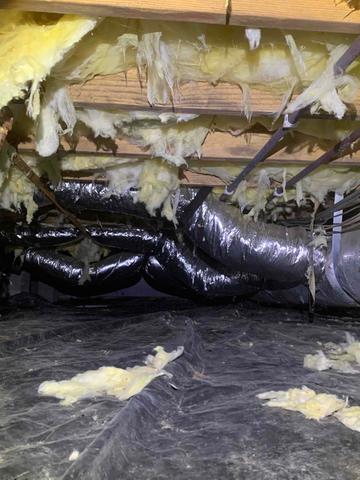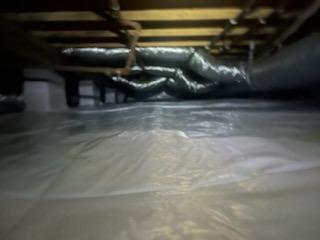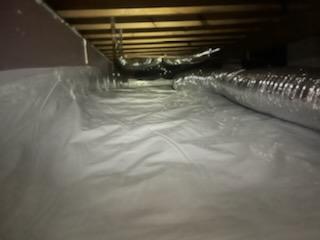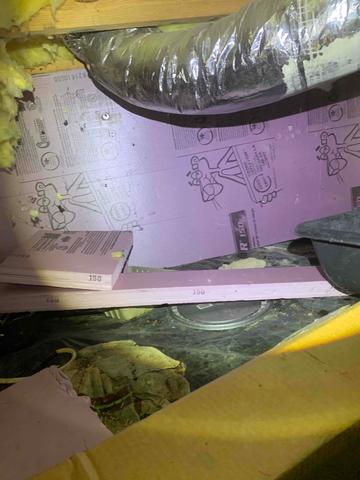
Falling Insulation
Insulation drips from the floor joists and litters the ground. This is a result of delamination, a process that occurs when moisture damages the fibers of the insulation causing them to pull apart. Mold and mildew are also present on the floor joists, caused by high relative humidity and warm temperatures, microbial growth occurs on organic materials inside of the crawl space.

CleanSpace 10-mil Vapor Barrier
The debris has been cleaned out and the mold treated with an antimicrobial. A 10-mil vapor barrier has been rolled out and sealed at all seams, wrapped and sealed around all piers, and attached and sealed to the walls. This isolates the crawl space from the earth's moisture.

Mold & Mildew
Based on debris left in the crawl space, we found that the previous job had addressed the microbial growth, but it didn't last. Without sealing the crawl space off and controlling the relative humidity, the mold and mildew reoccurred, causing the musty odors our homeowner was experiencing inside the house.

Sealed Crawl Space
The previous project had already insulated the foundation walls and vents helping to prevent moisture infiltration from the outside air. However, the ground was exposed allowing the earth's moisture and any water seeping in under the foundation wall to rise into the crawl space environment. The crawl space door was also worn and warped allowing moisture and humidity into the space. We sealed the crawl space off with a new vapor barrier, treated the mold, and installed a new crawl space door.

Crawl Space Debris
The previous workers left scraps and trash throughout the crawl space after installing foam board insulation on the foundation walls. There was also no viewing strip left at the top of the foundation wall for termite inspections, a code requirement.

Cleaned Out Crawl Space
After cleaning out all of the debris and removing the fiberglass insulation, our team cut the required viewing strip so the homeowner's pest control company can perform their termite inspections.

